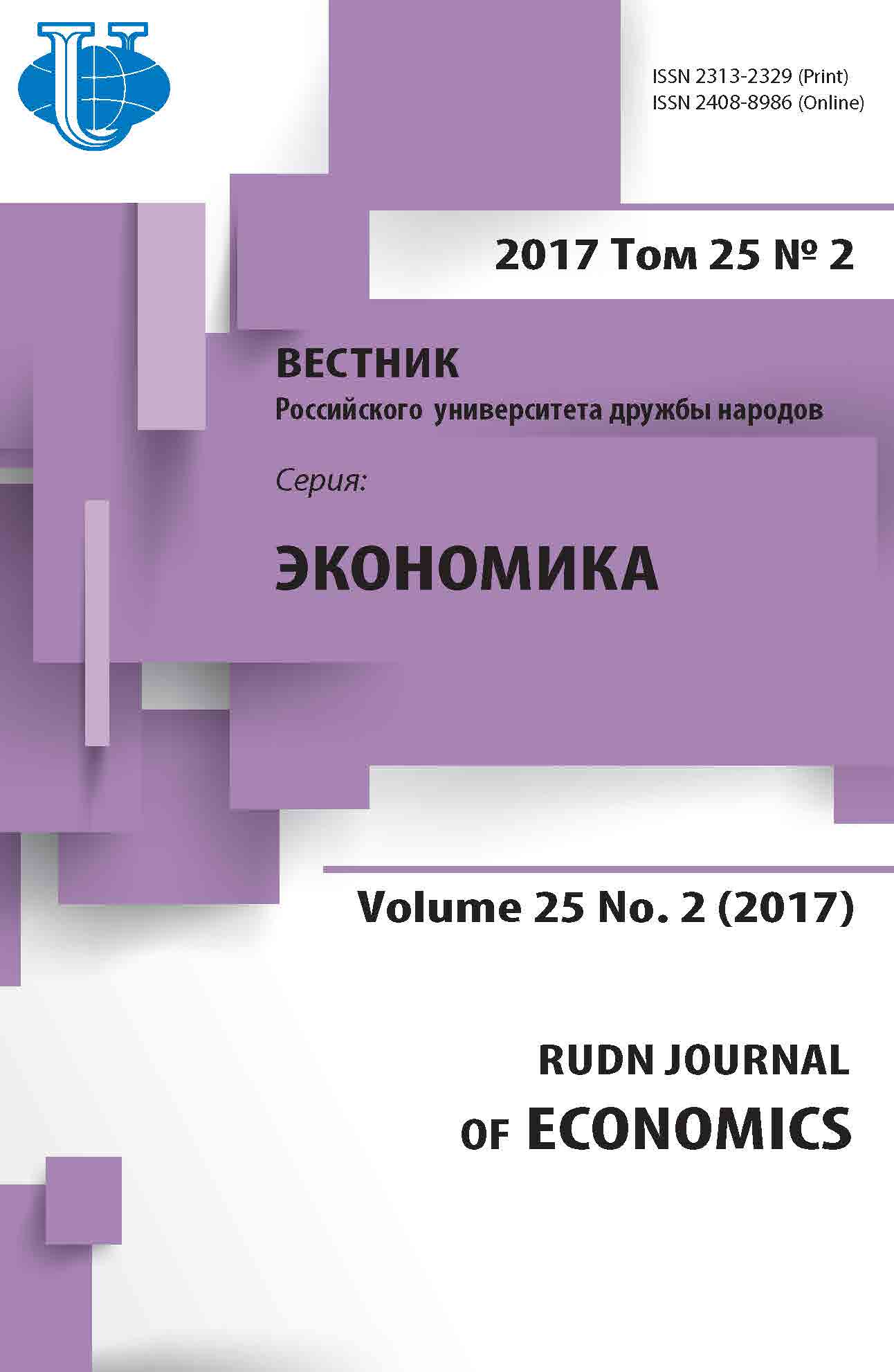ESTIMATION OF BANKRUPTCY RISK OF SMALL BUSINESS COMPANIES BASING METHODS OF MACHINE LEARNING
- Authors: Arinichev IV1, Bogdashev IV1
-
Affiliations:
- Kuban State University
- Issue: Vol 25, No 2 (2017)
- Pages: 242-254
- Section: Articles
- URL: https://journals.rudn.ru/economics/article/view/17164
- DOI: https://doi.org/10.22363/2313-2329-2017-25-2-242-254
Cite item
Full Text
Abstract
The article deals with the methodology for constructing an algorithm for determining the probability of bankruptcy of an enterprise using machine learning methods. The advantage of this methodology is the use of not only quantitative, but also qualitative indicators of financial stability of business entities, as well as the possibility of excluding factors that have little effect on the final rating. It is assumed that the created mathematic model will be useful to representatives of small and medium-sized businesses and will provide an objective and precise picture of the financial situation of the enterprise, including current threats and the risk of bankruptcy.
About the authors
I V Arinichev
Kuban State University
Author for correspondence.
Email: iarinichev@gmail.com
Arinichev I.V. Cand. Ec. Sci., Associate Professor, Department of Theoretical Economy, Kuban State University.
Stavropolskaya str., 149, Krasnodar, Russia, 350040I V Bogdashev
Kuban State University
Email: ibogdashev@gmail.com
Bogdashev I.V. Cand. Ec. Sci., Associate Professor, Department of Theoretical Economy, Kuban State University.
Stavropolskaya str., 149, Krasnodar, Russia, 350040References
- Aivazyan S.A., Bukhshtaber V.M., Enyukov I.S., Meshalkin L.D. (1989). Prikladnaya statistika. Klassifikatsiya i snizhenie razmernosti. M.: Finansy i statistika, 607 p. (In Russ)
- Vorontsov K.V. Matematicheskie metody obucheniya mashin po pretsendentam (teoriya obucheniya mashin) [Elektronnyi resurs]. Access Mode: http://www.machinelearning.ru/wiki/images/6/6d/ Voron-ML-1.pdf
- Donskoi V.I. (2014). Algoritmicheskie modeli obucheniya klassifikatsii: obosnovanie, sravnenie, vybor. Simferopol’: DIAIPI, 228 s. (In Russ)
- Zagoruiko N.G. (1999). Prikladnye metody analiza dannykh i znanii. Novosibirsk: IM SO RAN (In russ)
- Shipunov A.B., Baldin E.M. Analiz dannykh s R [Elektronnyi resurs]. Rezhim dostupa: http://www.soc.univ.kiev.ua/sites/default/files/course/materials/r1.pdf
- Altman E. (1968). Financial rations. Discriminent analysis, and the prediction of corporate bankruptcy. Journal of Finance, September.
- Altman E. (2005). Corporate Financial Distress and Bankruptcy, 3rd edition. John Wiley and Sons.
- Beaver W.H. (1996). Financial ratios as predictors of failure. Journal of Accounting Research. Vol. 4. Pp. 71—111.
- Bredart X. (2014). Bankruptcy Prediction Model Using Neural Networks. Accounting and Finance Research. Vol. 3(2). Pp. 124—128.
- Chesser D. (1974). Predicting loan noncompliance. The Journal of Commercial Bank Lending. P. 28—38.
- Eksi I. (2011). Classification of firm failure with classification and regression trees. International Research Journal of Finance and Economics. Vol. 76. Pp. 113—120.
- Falahpour S., Raie R. (2005). Application of support vector machine to predict financial distress using financial ratios. Journal of Accounting and Auditing Studies. Vol. 53. P. 7—34.
- Gorban A.N., Kegl B., Wunsch D., Zinovyev A.Y. (Eds.) (2007). Principal Manifolds for Data Visualisation and Dimension Reduction, Series: Lecture Notes in Computational Science and Engineering 58, Springer, Berlin — Heidelberg — New York, XXIV, 340 P. 82.
- Jarrow R.A., Turnbull S. (1995). Pricing derivatives on financial securities subject to credit risk. Journal of Finance. Vol. 50. P. 53—85.
- Jolliffe I.T. (2002). Principal Component Analysis, Series: Springer Series in Statistics, 2nd ed., Springer, NY, XXIX, 487 p.
- Korol T., Korodi A. (2011). An evaluation of effectiveness of fuzzy logic model in predicting the business bankruptcy. Romanian Journal of Economic Forecasting. № 3. P. 92—107.
- Merton R.C. (1974). On the pricing of corporate debt: the risk structure of interest rates. Journal of Finance. Vol. 29(2). P. 449—470.
- Ohlson J. (1980). Financial ratios and the probabilistic prediction of bankruptcy. Journal of Accounting Research. Vol. 18(1). P. 109—131.
- Wilson T. (1997). Portfolio Credit Risk: part I. Risk Magazine. 23, pp. 111—117.















